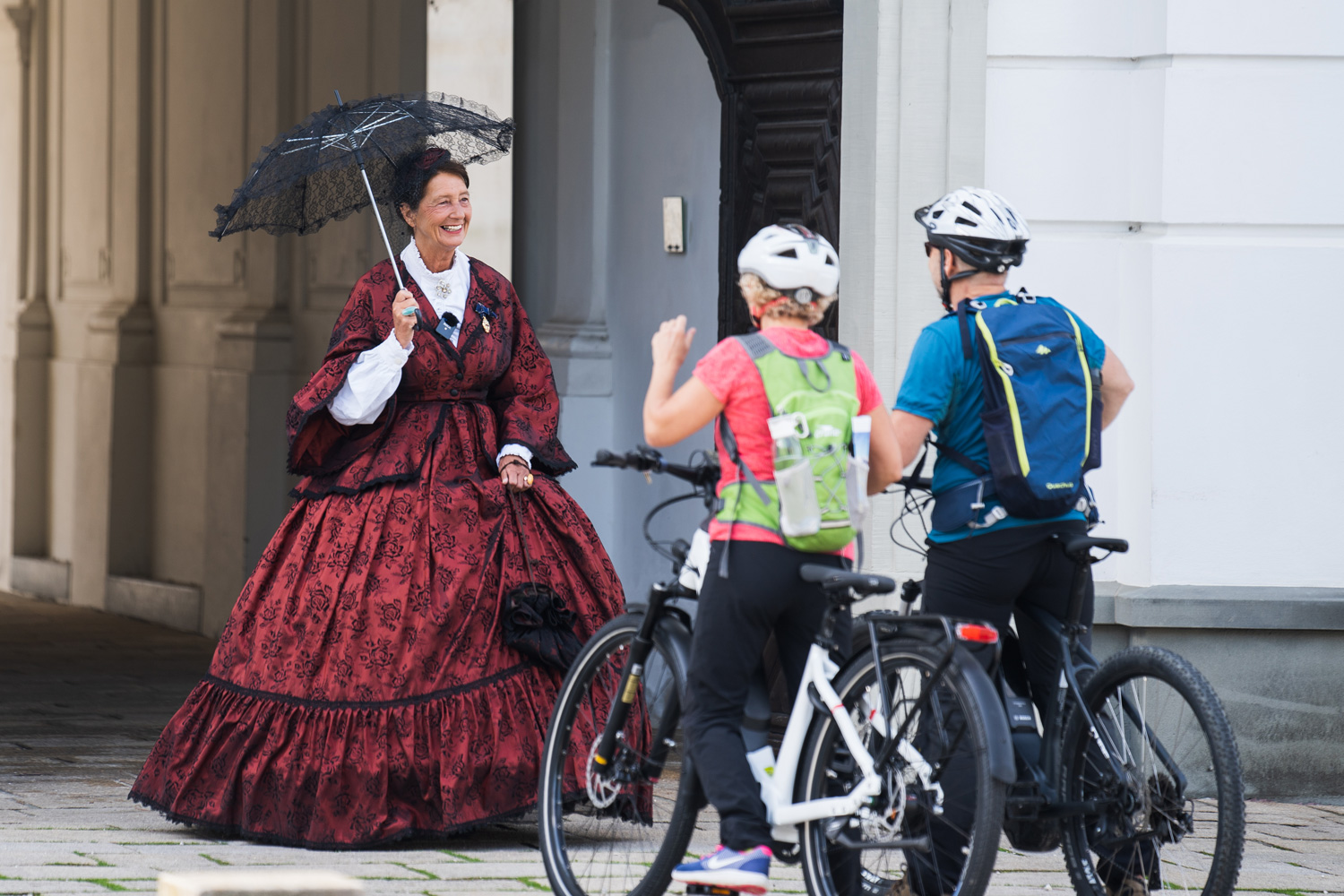In the footsteps of history
Time travelling on foot or by bike in SouthWest Germany

STUTTGART – Get on your bike! Lace up your hiking boots! Travel back in time! In SouthWest Germany, the German federal state of Baden-Württemberg, it is easy to explore 40,000 years of human history. Go back to the Ice Age. Step into the era of the Romans and the Celts. See what life was like in the Middle Ages. Understand how traditional craftsmen worked and how industrialisation changed the world.
Ice Age Valleys cycle trail: The beginnings of human culture
Around 40,000 years ago, the Ice Age inhabitants of the Lone and Achtal Valleys in the Swabian Alb created artworks and musical instruments that are surprisingly sophisticated. Even back then, humans were thinkers, who expressed themselves with symbols and music. In 2019, the 75-km / 50-mile Ice Age Valleys cycle trail opened. It connects archaeological sites and relevant museums in an area two hours southeast of Stuttgart. Starting in Schelklingen, it continues through Blaubeuren and Ulm to the Vogelherd Archaeological Park, near Niederstotzingen. Running through this UNESCO World Heritage area, the trail is ideal for e-bikes and can be followed in either direction or combined with other routes.
The Limes Cycle Path and Roman Paths: Borderline experiences
A couple of hours east of Stuttgart, the Limes marked the northern border of the Roman Empire. Where Roman soldiers once patrolled is today ideal for hiking and cycling. Along the way are numerous reconstructed watchtowers and forts, as well as well-preserved archaeological remains and museums that illustrate the life of the Romans in this part of SouthWest Germany. The Limes Cycle Path covers 164 km / 100 miles of ever-changing rural, wooded terrain from the Odenwald Forest via the Hohenlohe region and the Swabian-Franconian Forest to the Remstal valley and the Eastern Alb. It is paralleled by the Limes Hiking Trail. From 2022, the new Roman Paths (Römerpfade) will take you into the Roman past in the Odenwald. These circular or long-distance hikes of 5 - 15 km / 3 - 10 miles have different degrees of difficulty. Each is named after a Roman deity and has information on local Roman history. All are certified by the German Hiking Association as Quality Walks.
The Löwenpfad Staufer Trail: In the footsteps of a German dynasty
Between the 11th and 13th centuries, Göppingen was home to one of the most powerful ruling families in German history: the Staufers. Their coat of arms with the three lions is even on Baden-Württemberg's coat of arms today! And that’s what gives the Löwenpfad, the Lion Path, its name. The trail takes in reminders of the Staufer’s power, such as the 13th-century Wäscherschloss Castle and the ruined Hohenstaufen Castle. The circular route, certified as a "cultural experience" by the German Hiking Association, runs for 11.2 km / 7 miles between Wäschenbeuren and Göppingen. Although the trail has some testing climbs, the reward is sensational panoramic views. Göppingen is an hour east of Stuttgart.
The Castle Road Cycle Route: Pedal into the past
Few German federal states can match Southwest Germany when it comes to castles and palaces. To see where medieval knights lived and where flamboyant rulers held court in Baroque splendour, follow the Castle Road that runs from Mannheim to Kirchberg an der Jagst. One historic sight follows another on this popular holiday route along the Neckar River. Admire the mighty walls from the outside or stop and take a guided tour. Some castles and palaces have been converted into hotels, so you can stay the night and dream about days gone by. However, you do need to be fit (or rent e-bikes), as most castles and fortifications are built on hilltops. The route is hilly in the Hohenlohe region, but flatter along the Neckar Valley.
Kinzigtal Raft Trail: Go with the flow
For 500 years, from the 15th to the 20th century, the Black Forest provided Europe with tons of huge logs for building ships and houses. They were floated by skilful raftsmen downstream to the Rhine, eventually ending up in the Netherlands. Two hours southwest of Stuttgart, you can relive that age-old experience in Germany’s largest nature park, the Black Forest Nature Park. Follow the Kinzigtal Raft Trail that runs down the Kinzig River Valley along the 10-km / 6-mile section between Lossburg and Alpirsbach or the 23-km / 15-mile section between Alpirsbach and Wolfach. Learn all about rafting at stations and information points along the way; visit the museums; try geocaching.
The Filstal Valley Industrial Heritage Trail: Channel the spirit of invention
What would Baden-Württemberg be without its inventors, long-established companies and world-famous brands? The foundations of this industrial powerhouse were laid back in the 19th century. Just east of Stuttgart, in the Filstal Valley, you can explore the region’s industrial heritage as you pedal along an easy 26-km / 16-mile route. From Plochingen to Eislingen, the trail is lined with information points, explaining about the docks and train stations, workers’ simple cottages and factory owners' grand villas, the mills and power plants, the tool, metal and textile factories. Among the best-known today are WMF (tableware) and Märklin (toys and model railways)
Downloads
- In the footsteps of history.doc (doc - 705 KB)
- In the footsteps of history.pdf (pdf - 128 KB)
